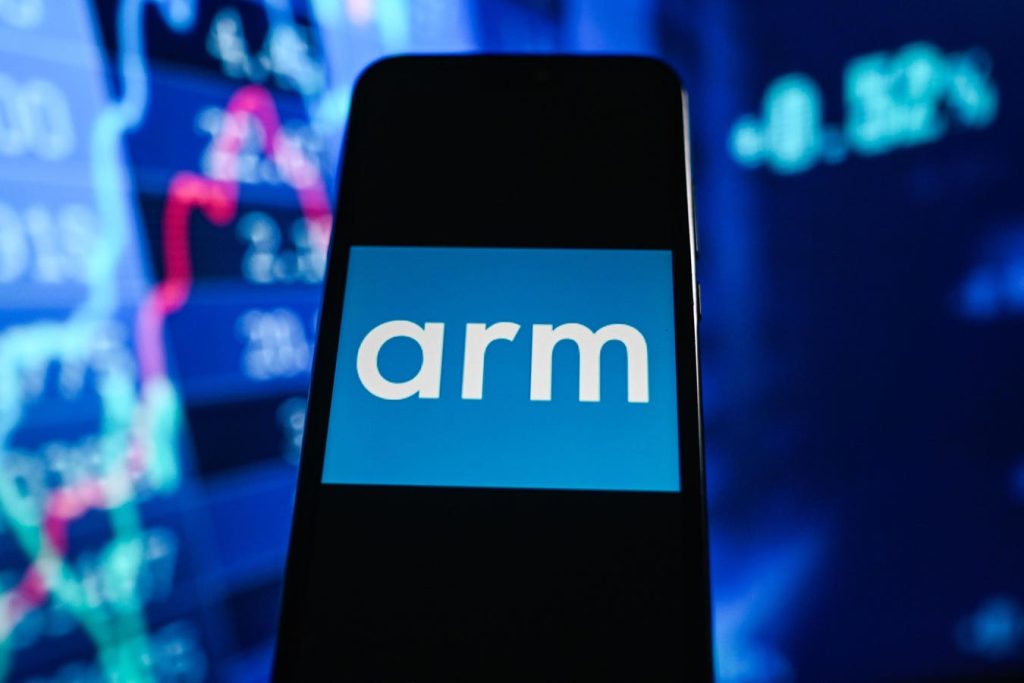Apple
AAPL
Inc. is an industry leader in high-end, custom microprocessors, yet the iPhone maker is being upstaged by an unlikely source. The implications for investors are huge.
Executives at Apple announced on October that new computers will get updated processors. The only problem is those chips are already second-rate to a Qualcomm (QCOM) offering.
Investors should continue to accumulate shares of Arm Holdings (ARM). Let me explain.
It is not often that investors get an inside glimpse at entire industry roadmap. This process is happening now for all to see. Computers are migrating from the X86 architecture developed and dominated by Intel (INTC), to a much more power efficient framework designed by Arm Holdings.
The writing was on the three years ago years ago when Tim Cook, Apple’s chief executive, shocked the industry with the first Macbooks using M1. The proprietary chip was developed to move the Cupertino, Calif.-based company away from Intel chips. M1 was a rocket ship, with blazing fast processing power and the benchmarks to back it up. M1 did everything better than its ancient Intel predecessor, and it ran on Arm Holdings’ intellectual property, the same tech that powers iPhones.
Apple is now onto generation 3 of the M-series chips. The presentation on Monday revealed three new M3 iterations. The fastest chip, the M3 Max has a 16 core CPU and as many as 40 cores dedicated to the GPU. It is a combination that is 15% faster than M2, while achieving up to 22 hours of battery life. M3 is an awesome new chip. Unfortunately for Apple, the achievement was upstaged by Qualcomm.
The Snapdragon X Elite is based on the Oryon processor, with 12 CPU cores peaking at 4.3GHz. Like M3, the chip uses Arm IP, making it ultra power efficient.
Qualcomm invited reporters last week to a special benchmarking session for the processor. The company had 20 Oryon-powered laptops simultaneously running popular benchmarking software such as Geekbench 6, Cinebench 24, PC Mark 10, Procyon AI, and 3Dmark WildLife Extreme. The results were embargoed until October 30, coinciding with the Apple M3 event. The planned comparison went as expected. X Elite dunked on Apple, according to an account from a WindowsCentral reporter.
The Snapdragon X Elite was able to beat M2-powered Macbooks with a 50% increase in performance, while using 30% less power.
To be fair, this is not an apples to apples comparison.
The Qualcomm chips will never run inside Macbooks. They were designed to power next generation devices running Microsoft (MSFT) Windows, the world’s most popular personal computer operating system. And that is the game-changer.
According to a company blog on October from Qualcomm, nine Windows PC makers have signed on to build new machines based on the X Elite platform. Acer, ASUS, Dell technology (DELL), Hewlett Packard, HONOR, Lenovo, Microsoft Surface, Samsung, and Xiaomi. These industry titans should begin rolling out laptops in 2024 powered by the X Elite chip, an industry resetting development.
Windows machines should finally be able to compete with new Macbooks in terms of performance and battery life. The inevitable transition to Arm-based processors also empowers PC makers, to the detriment of chip providers Intel and Advanced Micro Devices
AMD
(AMD).
The new X Elite platform will have only one stock keeping unit. A single SKU allows the PC companies to custom configure the chips, similar to the way Apple is configuring M3 into three uses cases. Intel and AMD often force companies like Dell to purchase multiple SKUs, like Core i3 or the HX-series. This complicates the supply chain and ultimately affords PC companies less flexibility.
Executives at Intel claim they are not worried about the shift to Arm. They say they will be happy to contract manufacture Arm-based chips in their factories for third parties. AMD has no such manufacturing facilities.
Arm is the clear winner, though. The British chip architecture designer effectively won mobile computing in 2007 when Apple chose its power sipping IP for iPhone. Partnerships with Qualcomm and Samsung followed. The road map to win the rest of computing is now being laid out for all to see.
At a price of $49.48 Arm shares value the business at $50.8 billion. Nvidia offered in 2020 to buy the entire business for $40 billion. Arm’s position in the industry is now far more influential, especially given the transition to PCs.
Investors should accumulate shares for the longer-term.
Discover the secrets to successful investing with our Strategic Advantage newsletter. Try it now for just $1!
Read the full article here




